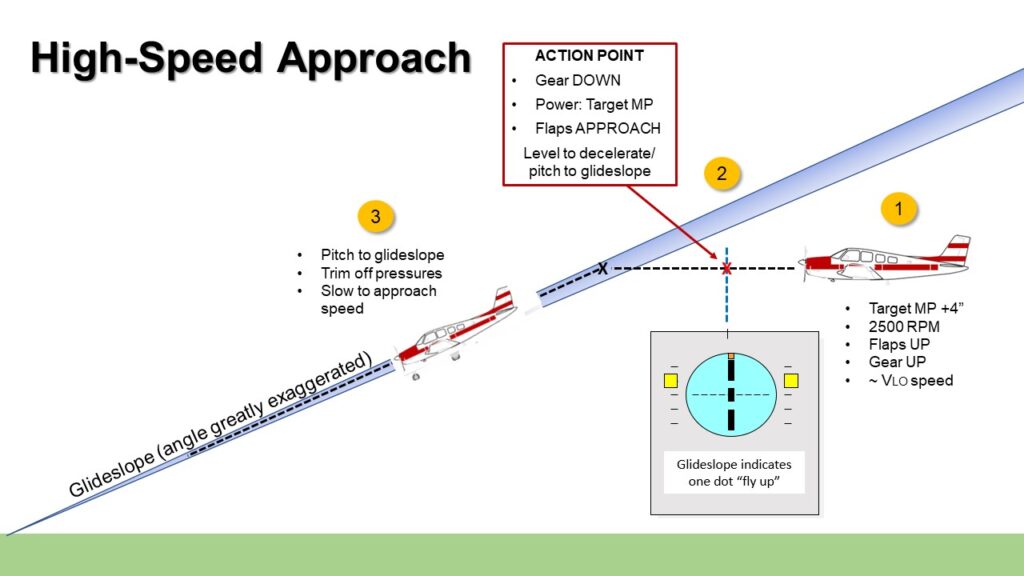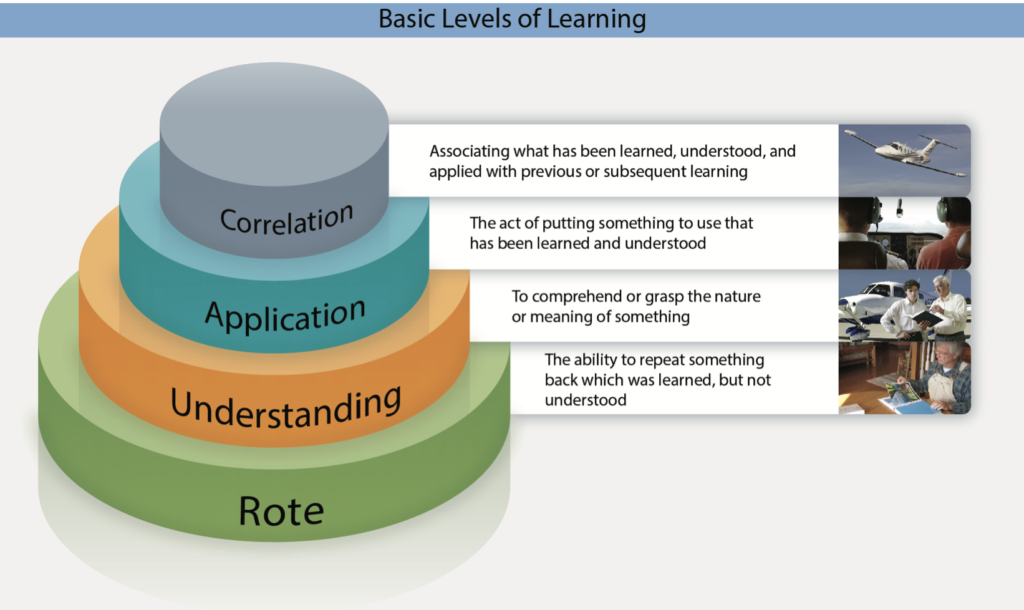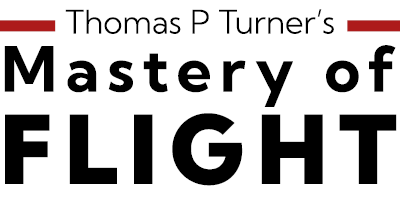FLYING LESSONS uses recent mishap reports to consider what might have contributed to accidents, so you can make better decisions if you face similar circumstances. In most cases design characteristics of a specific airplane have little direct bearing on the possible causes of aircraft accidents—but knowing how your airplane’s systems respond can make the difference in your success as the scenario unfolds. So apply these FLYING LESSONS to the specific airplane you fly. Verify all technical information before applying it to your aircraft or operation, with manufacturers’ data and recommendations taking precedence. You are pilot in command and are ultimately responsible for the decisions you make.
FLYING LESSONS is an independent product of MASTERY FLIGHT TRAINING, INC.
Pursue Mastery of Flight™
This week’s LESSONS:
Keep Your Speed Up
Have you ever been asked by Air Traffic Control to “keep your speed up” or to “make best speed” during approach and landing? How do you reconcile complying with this request with the desirability of flying a stabilized approach? How do you make the transition from “best speed” to flare and landing?
From the Australian Transport Safety Bureau:
A Cessna 172 struck the ground and nearly collided with hangars while going around following a fast and long landing on Gold Coast Airport’s shorter cross runway, an ATSB investigation report details.
On the afternoon of 6 February 2024, a Cessna 172R with a student pilot and flight instructor on board was returning to the Gold Coast at the end of a training flight, with the student receiving an initial air traffic control clearance to track direct to runway 32 (the southern end of Gold Coast Airport’s main runway). About 40 seconds after that initial clearance, the student and instructor then accepted an amended clearance to track to the shorter runway 35 at “best speed.”
Then, when the Cessna was at about 1,000 ft and 1.9 nautical miles from the runway 35 threshold, air traffic control directed the aircraft to maintain “best speed all the way in to crossing the runway”, and the instructor – unsure how to comply – directed the student to reduce throttle to idle and lower the aircraft’s nose.
“The aircraft subsequently passed about 100 ft above the runway threshold [twice the norm for a standard descent aiming for the 1000-foot touchdown zone markers] at about 25 kt faster than the normal approach speed,” ATSB Director Transport Safety Stuart Macleod said. “Unable to slow the aircraft down before the runway’s end, the instructor attempted to turn onto taxiway Golf, but the aircraft skidded onto the grass, and the instructor elected to conduct an emergency go-around.” During the go-around the aircraft’s fuselage struck the ground, and the pilot heard the stall warning horn, so [he] lowered the nose slightly, narrowly clearing a row of hangars.
“Landing with excessive speed is likely to result in the aircraft floating, landing long on the runway, bouncing and/or ballooning, all of which increase the risk of a landing mishap,” Mr. Macleod said. “Although not standard phraseology, air traffic controllers may ask pilots to maintain ‘best speed’, and it is up to the pilot to determine what is best in this context, and more generally advise if an instruction is unclear or cannot be complied with.”
The ATSB final report notes the aircraft exceeded the speed for a stabilised approach, but the instructor did not conduct a go-around prior to landing, or while on the runway.
“When operating in visual meteorological conditions, if an approach is not stabilised by the height specified by the operator – or generally by about 500 ft above the ground, or the approach becomes unstable after that point, go around,” Mr. Macleod said.
“Pilots are to always be ready to conduct a go‑around during the approach if any desired flight parameter, such as aircraft configuration, vertical speed, airspeed, or attitude, cannot be achieved.”
We all want to be able to fit ourselves into the flow of traffic, to get everyone on and off the runway efficiently. We all want to be seen and perceived as masters of our aircraft, able to comply with controller requests and unusual situations. We don’t want to get in the way of other aircraft, or to be vectored away and delayed making our own arrival.
So how do we reconcile a request to keep our speed up with the needs of a stabilized approach and a safe arrival?
First, what went right in this event? Tragedy was averted and this ATSB report became an advisory about a “near” accident, because the instructor recognized the indications of an impending stall and lowered the nose, that is, reduced angle of attack, to maintain controllability and flying speed. It would be very difficult to push forward on the Cessna’s control wheel with a line of hangars in your windscreen, even more so after the stress of a runway excursion and fuselage ground contact. The instructor showed great expertise and discipline to do the right thing once the aircraft was in this situation.
But frequently the situations that require exceptional pilot skill are events of our own making.
The larger question is how to comply with a “best speed” request…and then how to turn it into a safe landing. The key is making the transition from an unstable (or at least, unusual) approach to a normal, stable final approach, flare and landing.
What is a stable approach? The U.S. FAA defines a stable approach as a “constant angle glidepath towards a predetermined point on the landing runway.” The term is generally expanded to include the airplane being in the landing configuration (that is, flaps and landing gear) and at the proper final approach speed. As the ATSB report states, the usual recommendation is to fly a stabilized approach below 500 feet above runway elevation in light airplanes. Other sources recommend being “stable” below 1000 feet Above Ground Level (AGL), or even higher, in large aircraft.
The trick when complying with a controller’s request to “keep your speed up” is to do so to a point as close to the airport as possible, but to slow down in time to land in the normal touchdown zone at the normal landing speed so as to have aircraft control and sufficient runway remaining to stop normally. You may be able to taxi clear of the runway sooner that way than if you land fast. And getting you clear of the runway is soon as possible is ultimately the controller’s goal when asking a pilot to maintain “best speed.”
For example, a technique I developed and began teaching over 30 years ago is optimized for making a high-speed approach in a Beech Bonanza. To fly the technique you must first know the airplane configuration and power setting needed for a standard precision approach, both for level flight prior to glideslope/glidepath intercept and for the descent phase of the approach. The technique works equally well with a visual glide path indication system like a PAPI or VASI.
In the case of an A36 Bonanza it takes about 18 inches of manifold pressure, 2500 rpm propeller speed and approach flaps (12° to 15° depending on vintage) to fly level at approach speed (110 knots, for type-specific reasons I won’t address here). To descend on glidepath/glideslope, extend the landing gear and the airplane descends on a roughly 3° glide path (500-600 feet per minute) at that same airspeed. In that same example, it takes about 22 inches of manifold pressure at 2500 rpm, gear and flaps up, to fly at 150 knots indicated airspeed—just below the landing gear extension speed. Fly at that higher speed until the glide path marker is one dot “fly up” or the visual indicator is just beginning to show you’re on glidepath. Then, smoothly change the parameters to what’s normal for the precision descent—gear down, flaps approach, power to 18 inches—as you pitch to the glideslope/glide path and trim off the pressures. By the time you’ve descended 200 to 300 feet you’ll be trimmed on your normal 110 knot speed and ready to complete the approach with a normal flare and landing. You’ll be stabilized well before you’re 500 feet above runway height and in position for a controlled, normal touchdown.

Of course this is designed for a particular type of aircraft using its unique design and handling characteristics. But it shows you one way of developing your own Standard Operating Procedure (SOP) for when asked to “keep your speed up” that is effective in the type of airplane you’re flying. Create specific speed profiles for segments of your high-speed arrival, find power settings and configurations that result in those speeds, and practice the transition frequently enough that you have your own SOP. Yes, you can do this even in a Cessna 172.
“But wait, you might reasonably say, “the controller asked the Cessna pilot to maintain “best speed all the way in to crossing the runway.” To this request I’d respond that my “best speed” is to fly as fast as I can to a point on glidepath that permits me to slow to normal speed before I’m at 500 feet AGL. From there I’ll fly a normal, stabilized approach. The pilot in command gets to decide what is “best.”
If that’s not sufficient to fix the controller error that put two airplanes too close together on the final approach course, on intersecting runways, or whatever the conflict, then say “unable” and take the vector away to reenter the landing sequence.
What you don’t want is to be “unsure how to comply” and put yourself in a position you cannot land and clear the runway normally. That may lead to loss of control and, if you aren’t skilled and disciplined, can lead to tragedy.
Questions? Comments? Supportable opinions? Let us know at [email protected].

Debrief:
Readers write about recent FLYING LESSONS:
Reader and monthly supporter Edmund Braly answers last week’s questions:
Other than total power loss, what would be a situation where you would consider making a precautionary off-airport landing? How will you decide under those conditions? How would you prepare yourself and your passengers for a precautionary landing? How can you better predict or avoid the threats?
Edmund writes:
In-flight fire, or suspicion of one, would lead to a power loss (fuel shut-off) and controlled but expedited descent. Gear down would give faster controlled descent, but it’s unlikely you’d want gear down in an of airport landing. Would have to plan that decision ahead of time and base it on the likelihood of finding suitable pavement/geography.
[Carbon monoxide from the fire] would most likely decrease in cabin with engine off and decreasing altitude (increasing 02 concentration in atmosphere) but high affinity for C0 in the blood will cause slower improvement. That would be a tough call to make while wondering if you were impaired…probably preplan to adjust for the worst. Worst scenario is not that you walk away from a damaged plane that “might have made it to the next airport”…it’s not even close. Makes a great case for a small 02 bottle (which is not available until active fire is ruled out).
I agree—the primary reason-for-being for a precautionary landing is an inflight fire. Thanks, Edmund.
Reader Robert Lough adds:
Thank you, Tom, for publishing in your MoF on precautionary landings. I believe Richard Bach may have mentioned the neglect of instructing on precautionary landings in one of his earlier books.
I often wonder why the FAA [Commercial Pilot standards] go to some length on improving and testing skills on low level manoeuvring, but perhaps doesn’t integrate these skills in applying them to carrying out a well-planned precautionary landing simulation.

Levels of Learning (FAA Aviation Instructor’s Handbook)
That’s an excellent point. In Bach’s era precautionary landings were more common, with less reliable engines and poorly reported aviation weather…with no inflight updates other than what you could see through the windscreen or perhaps get by a radio call to Flight Watch (remember that?). That said, I’d like to see more training and evaluation of correlation, the highest level of learning, especially on the Commercial Pilot level and again in the various Flight Instructor Airman Certification Standards. Thank you, Robert.
More to say? Let us learn from you, at [email protected].

Share safer skies. Forward FLYING LESSONS to a friend
Please help cover the ongoing costs of providing FLYING LESSONS through this secure PayPal donations link. Or send a check made out to Mastery Flight Training, Inc. at 247 Tiffany Street, Rose Hill, Kansas USA 67133. Thank you, generous supporters.
Thank you to our regular monthly financial contributors:
Steven Bernstein, Montclair, NJ. Robert Carhart, Jr., Odentown, MD. Randy Carmichael, Kissimmee, FL. Greg Cohen, Gaithersburg, MD. John Collins, Martinsburg, WV. Paul Damiano, Port Orange, FL. Dan Drew. Rob Finfrock, Rio Rancho, NM. Norman Gallagher. Bill Griffith, Indianapolis, IN. Steven Hefner, Corinth, MS; Ellen Herr, Ft Myers, FL. Erik Hoel, Redlands, CA. Ron Horton. Robert Hoffman, Sanders, KY. David Karalunas, Anchorage, AK. Steve Kelly, Appleton, WI. Karl Kleiderer. Greg Long, Johnston, IA. Rick Lugash, Los Angeles, CA. Richard McCraw, Hinesburg, VT. David Ovad, Resiertown, MD. Steven Oxholm, Portsmouth, NH. Brian Schiff, Keller, TX. Paul Sergeant, Allen, TX. Ed Stack, Prospect Heights, IL; Paul Uhlig, Wichita, KS. Richard Whitney, Warrenton, VA. Jim Preston, Alexandria, VA. Johannes Ascherl, Munich, Germany. Bruce Dickerson, Asheville, NC. Edmund Braly, Norman, OK. Steven Hefner
And thanks to these donors in 2024:
Jim Lara, Joseph Stadelmann, Dixon Smith, Barry Warner, Wayne Mudge, Joseph Vandenbosch, Ian Campbell, Jay Apt, John Kimmons, Derek Rowan, Michael Maya Charles, Ron Horton, Lauren McGavran, Gerald Magnoni, Amy Haig, Rod Partlo, Brent Chidsey, Mard Sasaki-Scanlon, SABRIS Aviation (Dave Dewhirst), Edmund Braly, Joseph Orlando, Charles Lloyd, Michael Morrow, Abigail Dang, Thomas Jaszewski Danny Kao, Gary Garavaglia, Brian Larky, Glenn Yeldezian, David Yost, Charles Waldrop
Pursue Mastery of Flight
Thomas P. Turner, M.S. Aviation Safety
Flight Instructor Hall of Fame Inductee
2021 Jack Eggspuehler Service Award winner
2010 National FAA Safety Team Representative of the Year
2008 FAA Central Region CFI of the Year
FLYING LESSONS is ©2024 Mastery Flight Training, Inc. For more information see www.thomaspturner.com. For reprint permission or other questions contact [email protected].

